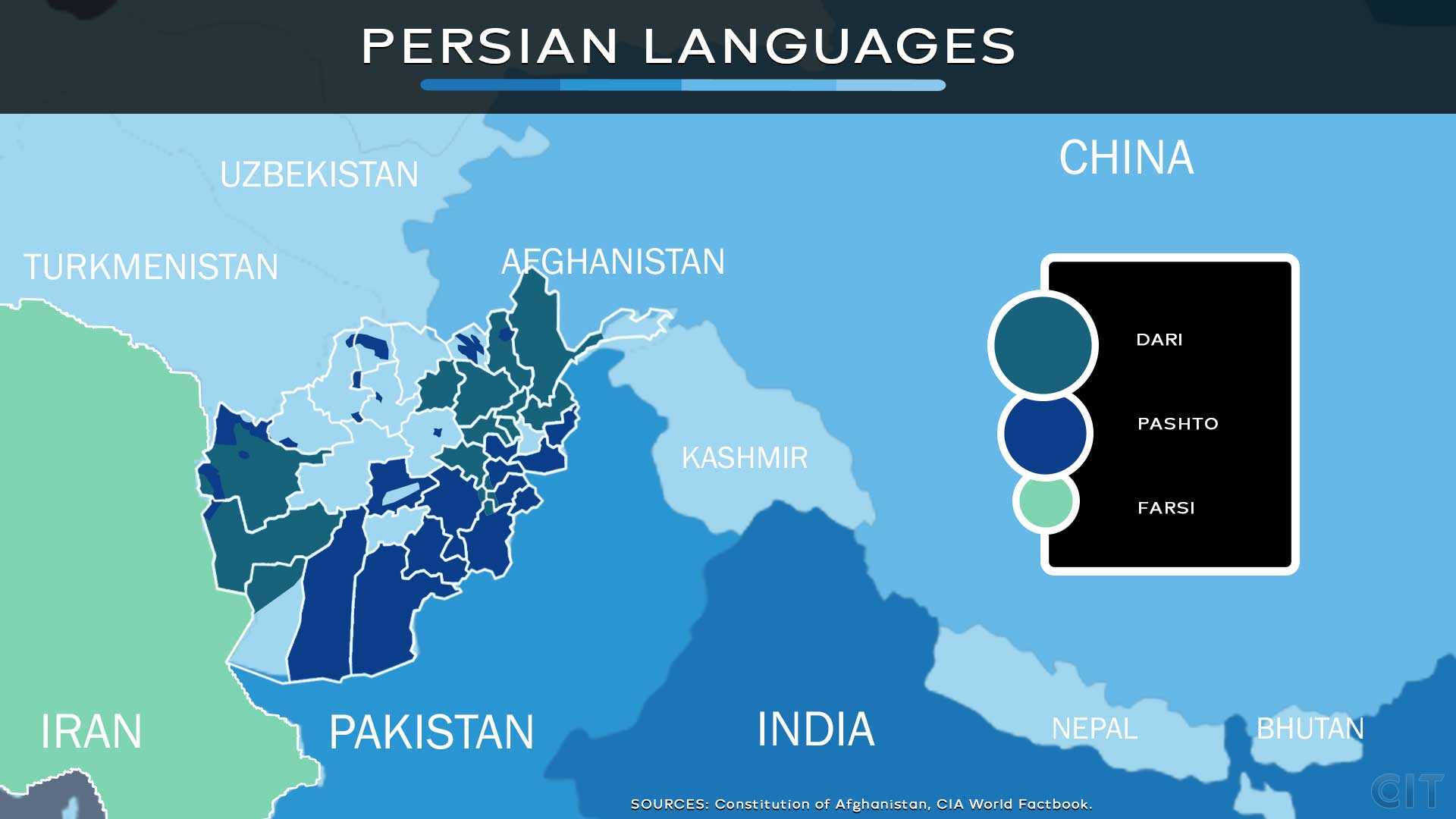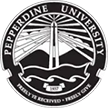Pashto, Dari, and Farsi are endonyms of closely related Persian languages that use a modified script of the twenty-eight (28) letter Arabic alphabet (al-abjadīyah). Dari adds four (4) additional letters and Pashto has added twelve (12) — and Pashto is written in Naskh script.
The Arabic alphabet is used across northern Africa through the Middle East, and onward to Asia. Many native translators of Arabic script are found along that horizontal plane stretching from Morocco to Pakistan.


Persia plays a role in the establishment of the Indo-European family languages Dari and Farsi. It helps to understand Egypt, Iran, Iraq, Turkey and parts of Afghanistan and Pakistan are what made up the Achaemenid Empire — commonly known as Persia. Persia existed for almost 1000 years between 559 BC/BCE and 331 AD/BCE. Iran is the remaining central location to what was once Persia. That explains why some refer to Farsi as Persian.
The Persian Alphabet is central to what was once Persia. Pashto, Dari, and Farsi are primarily found in Afghanistan and Iran. Of these three, Dari and Pashto are spoken in Afghanistan with Farsi as Iran's official language.
When the Taliban was deposed in 2001, the use of Dari grew. Without a census it's speculated Dari became the most prevalent language in Afghanistan. Dari is not spoken in every corner of Afghanistan. It is used more to the west. Pashto is spoken more to the east in Afghanistan.
These three languages remain native to the Persian landscape while becoming more prominent in the United States over the past few decades due to immigration. Some come to the U.S. to join previous family members. Many have come to America to flee persecution from the Taliban. This results in the need to learn English, or at the very least translate Pashto or Dari to English.
Most all Afghans moving to America speak Pashto or Dari. There's a slight chance some Afghani may speak Farsi if they live in a specific area near the Iranian border. For the most part, Farsi is a language of Iran.
These unique languages require translation assistance for day-to-day and official life and need translation services for legal documents (e.g., birth certificates, driver's licenses), medical care (e.g., health insurance forms, patient education materials), work documents (e.g., job applications), and much more.
The largest ethnic group in Afghanistan is the Pashtuns (more below) who speak Pashto. The Pashtun are also the most politically influential. The Taliban are Pashtun. The Pashtun have long resented Farsi being spoken in their country referring to it as a language that belongs to Persians in Iran.
Up until 1936 Pashto was the national language of Afghanistan.
In 1964 when the Afghan Constitution was drafted, there was an attempt to broker peace among the societal sects. The solution was that neither Pashto nor Farsi would be the official language alone. There would be two official languages. The sticking point remained that Farsi wouldn't be accepted by the opposition.
It was at that time in Afghan history Persian was renamed Dari and selected as the official language along side of Pashto.
Originating from Kandahar Pashto is a stand-alone ethnic language belonging to the Pashtun spread across Afghanistan and Pakistan. Pashto (or Pashtu & Pakhtu) is an Indo-Iranian language derived from Avestan, Pamir, Ossetic with Arabic influences. It has between 40 to 60 million native speakers and is spoken by about 52 million people in Afghanistan where it spoke along with Dari.
Pashto is also spoken through parts of Pakistan, Cameroon, Canada, Iran, Japan, Kenya, Kyrgyzstan, Madagascar (a small number of people), the Middle East (including parts of Lebanon and Syria), Russia (only in some regions), Gaza Strip (only in some regions), Saudi Arabia (only in some regions) Tajikistan (about 30% of the population speaks Pashto), Turkey (only in some regions), Turkmenistan, United Arab Emirates, Uzbekistan, and many others.
The written language of ancient Persia is called Dari. As discussed prior, Dari as a name came about in 1964 when the country drew up its constitution. Before that time, Dari was referred to as Persian. If that does comport with the earlier statement of Farsi being called Persian, the answer is they both are leaving open the argument is Dari are dialect or borrowed language?
Most Afghani dialects are more similar to Dari than Iranian Farsi. People who speak them usually have some knowledge about both languages due to their rural backgrounds and history with differing forms over time. An example is Hafiz, which is utilized by government officials.
Dari (Eastern Persian. Eastern Farsi, Dari Persian, Afghan Persian) is also an Indo-European language spoken by almost 8 million people living primarily in Afghanistan but also through northern Iran.

In Afghanistan, both Dari and Pashto are taught as second languages in fourth grade. Dari has a good deal of English influence where original English is spoken and spelled words are not translated but spoken and spelled in English. This mostly stems from modern medical and technical terms. Dari had been considered the majority language in Afghanistan with 40 to 45 percent of the Afghan population speaking Dari until 2021 when the Taliban seized Afghanistan,
The different dialects of Dari spoken in Afghanistan can be divided into five groups: Herati, Tajiki, Kabuli (which covers most areas), Khorasani and Parsiwan.
In Iran there is one main group known as Yazdi or Kerman which forms an integral part of the language's grammar but has some specific words that differentiate them from other varieties like for example tehdid, which means obligation. While its synonym tahjed does not exist within this word structure.
Farsi is another Indo-European language that descended from the Persian language which was spoken throughout the region. It is spoken by almost 600 million people, making it one of the largest languages in the world. Farsi speakers are primarily Iranian but also through Iraq, Israel, Lebanon, Saudi Arabia and Syria.
In a nutshell, Dari is Persian spoken in Afghanistan, while Farsi is Persian spoken in Iran. Due to Dari's similarities, the two are regionally spoken of as Eastern Farsi and Western Farsi.
The largest population centers for each language are as follows:
Pashto
In Afghanistan, Pashto is most commonly found in Peshawar, Kabul, and Quetta. Dialects:
Dari
In Afghanistan, Dari is most commonly found in Afghanistan's capital city of Kabul and in Mazar Sharif. Dialects:
Farsi
In Iran, Farsi is most commonly found in its capital city of Tehran but can also be found in Herat, Mashhad, and Shiraz.
The largest cities for each language in the United States are:
Pashto
The largest populations of Pashto speakers are in New York City, Washington D.C., Chicago, and Los Angeles.
Dari
The largest populations of Dari speakers are in New York City, Washington DC, Boston, and San Diego.
Farsi
The largest populations of Farsi speakers are in Los Angeles, Houston, New York City, and Washington DC.
Each of these languages encounters communication difficulties when adapting to living in the United States which are not all related to learning English.
Pashto
Many Pashto people encounter difficulties in the US, including a lack of Pashto-speaking community members. People who speak Pashto often face challenges finding jobs that accommodate Pashto interpretation and translation services for their interviews.
Dari
Dari speakers encounter difficulties learning English because most learning materials were created to teach Farsi speakers. Dari speakers also have a difficult time finding Pashto interpreters and translators.
Farsi
Farsi speakers have a difficult time learning Pashto because Pashto has many differences from Farsi, making it very challenging for Farsi speakers to learn Pashto.
The U.S. is known for being resourceful. Today's modern U.S. society is more helpful than ever to foreign nationals. Some cities are a better benefit to specific languages.
Pashto
There are several organizations that are dedicated to helping Pashto speakers in New York including the Afghan Association of New York, the Pashtun American Cultural Association, and Zabuli Education Center.
Dari
Several organizations are dedicated to helping Dari speakers in Massachusetts. These include the Afghanistan Center at Boston University, Salaam School, and Harvard University.
Farsi
There is only one organization that is dedicated to helping Farsi speakers in Los Angeles. This organization is the Iranian American Cultural Association of Southern California.
Obstacles that Pashto, Dari, and Farsi speakers encounter in the United States are primarily language barriers, but also include other barriers such as socioeconomic status. Pashto speakers often face discrimination in the United States because Pashto is not taught in many schools.
Dari speakers also face discrimination in the US, including inappropriate comments about Pashtun people made on news outlets. Many Dari speakers are discriminated against for their Islamic faith, which can cause safety concerns for Pashto interpreters and translators.
Farsi speakers in the US often face discrimination in Pashto dialects. This can lead to a lack of Pashto interpretation and translation services.
A Pashto speaker's primary means of communication with government officials is through Pashto interpreters and translators, but Pashto-speaking community members are not always available.
Dari speakers primarily rely on Pashto interpreters and translators for their interactions with the government, but Pashto-speaking community members are not always available.
Farsi speakers primarily use Pashto interpreters and translators for interactions with the government because Pashto is not taught in many schools, but Pashto-speaking community members are not always available.
These issues result in the need for outside interpreting and translation services for Pashto, Dari, and Farsi speakers alike. They use services like CIT for Pashto interpreters, Pashto translators, Dari interpreters, Dari translators, and Farsi interpreters and translators who are Pashtun people who speak Pashto, Pakistani people who speak Pashto and Peshawari Pashtun people who speak Pashto.
The Pashtun people of Pashtoon descent found in the United States are Pashtuns who left Pakistan after 1979. The largest populations of Pashtuns (also called Pashtoon, Pukhtu, and Pukhtoon) in the United States are found in New York City (estimated at 70,000 ), Washington DC, Boston, and San Diego.
In Washington, DC Pashtuns make up more than 50% of the Pakistani American community there.
There is an estimated population of 10,000 Pakhtoons in Boston and Pakhtoon descent Pakistanis make up 45% of all Pakistani immigrants to Boston.
In southern California, Pakhtoons make up about 20% of Pakistani immigrants there.
The Pashtun people of Pashtoon/Pashtun descent found in the United States are Pashtuns who left Pakistan after 1979. The largest populations of Pashtuns (also called Pashtoon, Pukhtu, and Pukhtoon) in the United States are found in New York City (estimated at 70,000 ), Washington DC, Boston, and San Diego.
In Washington, DC Pashtuns make up more than 50% of the Pakistani American community there.
There is an estimated population of 10,000 Pakhtoons in Boston and Pakhtoon descent Pakistanis make up 45% of all Pakistani immigrants to Boston.
In southern California, Pakhtoons make up about 20% of Pakistani immigrants there.
Farsi speakers or Farsis (also called Parsis) come to the United States in much smaller numbers and originate primarily from Iran. The largest populations of Farsi speakers in the United States are found in Los Angeles, Washington DC, and New York City.
What language does the Taliban Speak? The Taliban speak Pashto.
Is Dari endangered under the Taliban? Dari is endangered in Afghanistan under Taliban rule. During the Taliban's prior rule (1996-2001), the Taliban forced Pashto as the only language. The Taliban forced books to be re-written and people to learn Pashto.
What Countries Is Persian The Official Language? Persian is the official language in three countries. Afghanistan Iran Tajikistan
If Dari replaced Persian as the language's name, what does Dari mean? Dari is an old, medieval synonym. Dari's meaning or definition is Language of the court.
| LANGUAGE | ARABIC ALPHABET | PERSIAN |
|---|---|---|
| Pashto | 40 Letters | پشتو |
| Dari | 32 Letters | دری |
| Farsi | 32 Letters | فارسی |
| LANGUAGE | ARABIC ALPHABET | PERSIAN |
|---|---|---|
| Pashto | 40 Letters | پشتو |
| Dari | 32 Letters | دری |
| Farsi | 32 Letters | فارسی |
These three Persian Languages may soon be two as the Taliban replaced Dari the last time they ruled Afghanistan. And if you need a Persian interpreter or document in Pashto, Dari or Farsi translated into English, call us. We're open every day of the year, 24 hours a day to serve you. The call is free. 888.737.9009.
Our apologies for not adding Tajik to round out the Persian language family. Our focus here is on the Afghani. Perhaps a longer re-write is in store.


No matter what your needs may be, we can and are ready to assist you now. We have translators and interpreters standing by 24/7.

CIT's interpreter is such a rockstar, and it’s so great to have him as a lead interpreter for our Board meetings. About Our Interpreters 
Thank you for always being able to handle emergency interpreting assignments with ease. About Urgent Requests 
Thank you for always being able to handle emergency interpreting assignments with ease. About Urgent Requests 
Your translation rates are more competitive than other language service providers I used in the past. About Pricing 

Professionalism matters at CIT. We respond to request inside 24 hours.







